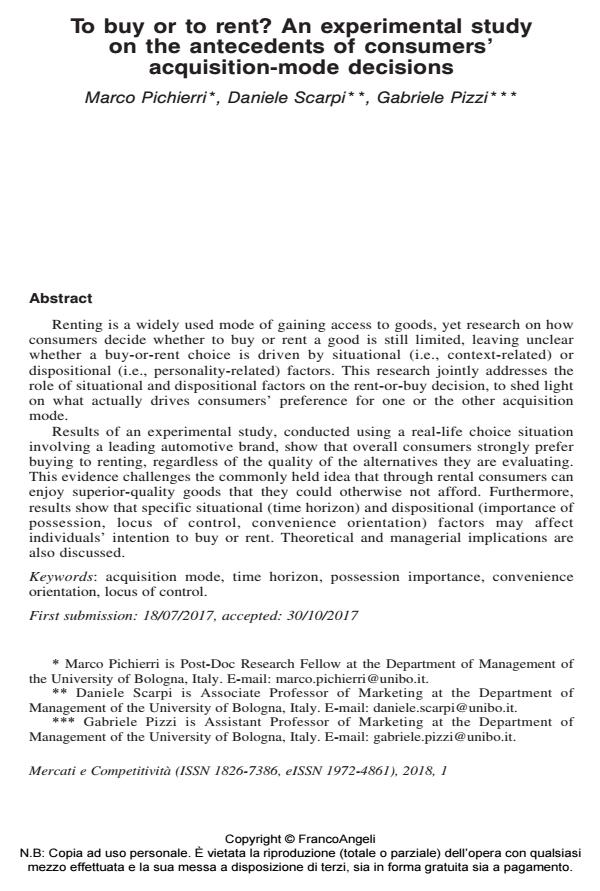To buy or to rent? An experimental study on the antecedents of consumers’ acquisition-mode decisions
Journal title MERCATI & COMPETITIVITÀ
Author/s Marco Pichierri, Daniele Scarpi, Gabriele Pizzi
Publishing Year 2018 Issue 2018/1
Language Italian Pages 28 P. 63-92 File size 2596 KB
DOI 10.3280/MC2018-001005
DOI is like a bar code for intellectual property: to have more infomation
click here
Below, you can see the article first page
If you want to buy this article in PDF format, you can do it, following the instructions to buy download credits

FrancoAngeli is member of Publishers International Linking Association, Inc (PILA), a not-for-profit association which run the CrossRef service enabling links to and from online scholarly content.
Renting is a widely used mode of gaining access to goods, yet research on how consumers decide whether to buy or rent a good is still limited, leaving unclear whether a buy-or-rent choice is driven by situational (i.e., context-related) or dispositional (i.e., personality-related) factors. This research jointly addresses the role of situational and dispositional factors on the rent-or-buy decision, to shed light on what actually drives consumers’ preference for one or the other acquisition mode. Results of an experimental study, conducted using a real-life choice situation involving a leading automotive brand, show that overall consumers strongly prefer buying to renting, regardless of the quality of the alternatives they are evaluating. This evidence challenges the commonly held idea that through rental consumers can enjoy superior-quality goods that they could otherwise not afford. Furthermore, results show that specific situational (time horizon) and dispositional (importance of possession, locus of control, convenience orientation) factors may affect individuals’ intention to buy or rent. Theoretical and managerial implications are also discussed.
Keywords: Acquisition mode, time horizon, possession importance, convenience orientation, locus of control.
Marco Pichierri, Daniele Scarpi, Gabriele Pizzi, To buy or to rent? An experimental study on the antecedents of consumers’ acquisition-mode decisions in "MERCATI & COMPETITIVITÀ" 1/2018, pp 63-92, DOI: 10.3280/MC2018-001005